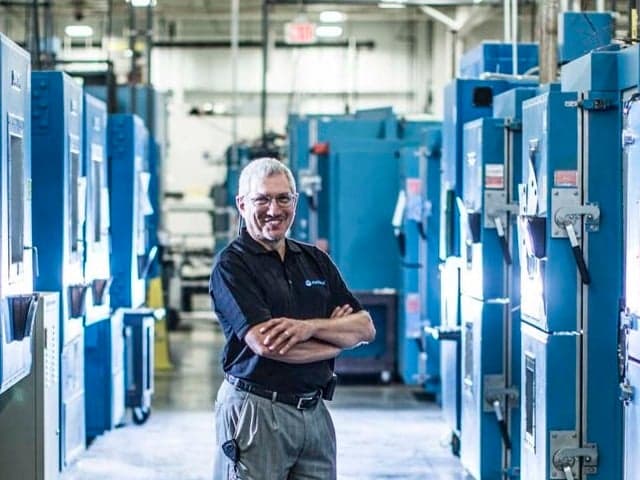Xenon Arc Testing
Accelerate your product development and prevent costly failures with our comprehensive xenon arc testing services. We help you validate material durability in a fraction of the time through advanced accelerated exposure testing, delivering accurate UV degradation data that ensures your products meet real-world performance requirements.

What is Xenon Arc testing at Element?
Xenon arc testing simulates the effects of sunlight, moisture, and heat on materials using precision gas discharge lamps in controlled environmental conditions. At Element, we provide advanced weatherometer testing that accurately reproduces full-spectrum solar radiation to evaluate material durability for both indoor and outdoor applications.
What can Element offer you for Xenon Arc testing?
Key tests offered
Key tests offered
Our xenon arc testing services simulate both direct outdoor sunlight and through-window-glass indoor exposure conditions. We provide controlled environmental testing combining UV exposure, moisture, and temperature to accurately replicate real-world conditions. Filtered xenon arc light sources and customizable filter combinations allow precise simulation of solar radiation under specific field conditions. Humidifiers provide moisture, while heaters manage temperature allowing our expert team to closely mimic natural, or accelerated weathering cycles.
Components and materials we test
Components and materials we test
We test a comprehensive range of materials requiring durability validation, from paints and coatings to polymeric materials for outdoor applications. Our expertise spans automotive and aerospace components, textiles for colorfastness, and inks for polymer damage assessment.
Methods and solutions offered
Methods and solutions offered
Using advanced weatherometers, we conduct accelerated exposure testing that compresses years of outdoor exposure into shorter timeframes. Our controlled testing environments ensure precise simulation of environmental conditions, delivering accurate degradation data for informed decision-making. Our testing methods are adaptable, with a range of xenon arc configurations and optical filters available to replicate your specific field service environment.
Cutting-edge equipment we use
Cutting-edge equipment we use
Our laboratories feature state-of-the-art xenon arc weatherometers utilizing long arc lamps, where the arc length exceeds the arc diameter, providing the closest approximation of full-spectrum solar radiation. These systems combine precision light filtering, humidity control, and temperature regulation for accurate environmental replication.
Which labs offer this service?
Which labs offer this service?
Our team operates from Materials Testing hubs across the world, providing global access to our expert capabilities. Find your nearest Materials Testing hub on our Locations Page.
Standards we test to and materials we test
Our Engaged Experts conduct xenon arc testing in compliance with the primary standards established by international organizations, including:
- American Association of Textile Chemists and Colorists - AATCC 16.3
- American Society for Testing and Materials - ASTM G155; ASTM D4798/D4798M (xenon arc method); ASTM D2565; ASTM D4459; ASTM D7869
- Society of Automotive Engineers - SAE J1885; SAE J1960; SAE J2412; SAE J2527
At Element, we perform xenon arc testing on a variety of materials, including:
- paints, coatings, and decals
- polymeric materials for outdoor and indoor commercial or residential applications (vinyl siding)
- textiles for colorfastness testing
- inks for polymer damage testing
- materials and trim components, both interior and exterior, for the aerospace and automotive industries.
Your Challenges, Our Solutions
Time-Critical Development
Product Failure Prevention
Complex Environmental Requirements
Standards Compliance
Why Choose Element
Industry-Leading Technology
Comprehensive Testing Capabilities
Global Testing Network
Full Standards Compliance
Frequently asked questions
How does xenon arc testing differ from other light sources?
Unlike electrical carbon arcs, xenon arc uses precision gas discharge lamps in sealed quartz tubes, providing the closest simulation of natural sunlight available for accelerated exposure testing.

Explore our global network of labs and find your nearest location
VIEW ALL LOCATIONSRelated services

Accelerated Weathering Testing Services
Element's accelerated weathering testing services evaluate durability under harsh conditions, helping you mitigate premature product failures, maintain quality standards, and achieve confidence in real-world performance for consistent success.

Carbon Arc Testing
Element provides carbon arc testing for plastics, paints, and coatings, using advanced methods to assess material durability against sunlight and moisture.

Ultraviolet Exposure & UV Testing Services
Element's UV testing services simulate sunlight exposure to assess material durability. Gain critical insights into degradation, improve product longevity, and meet industry standards with precise, lab-controlled testing.

